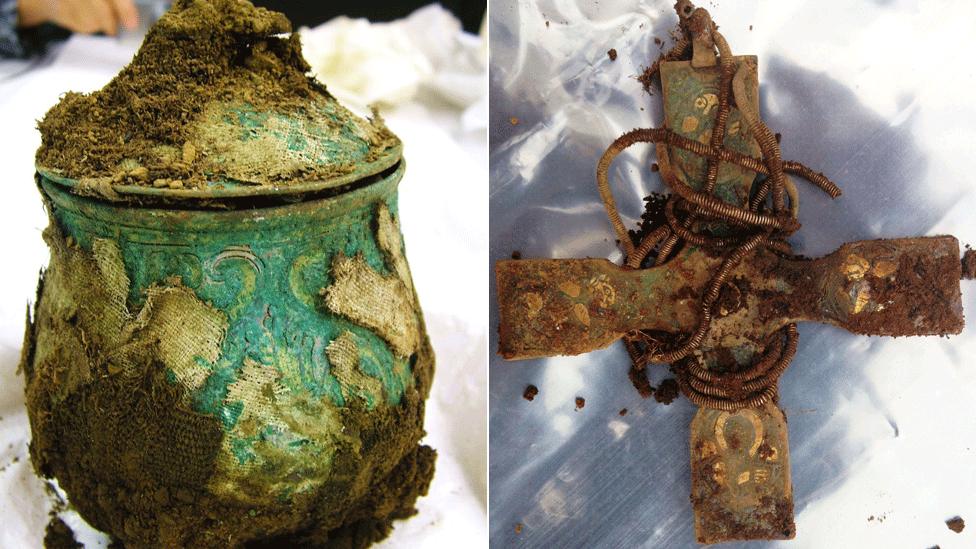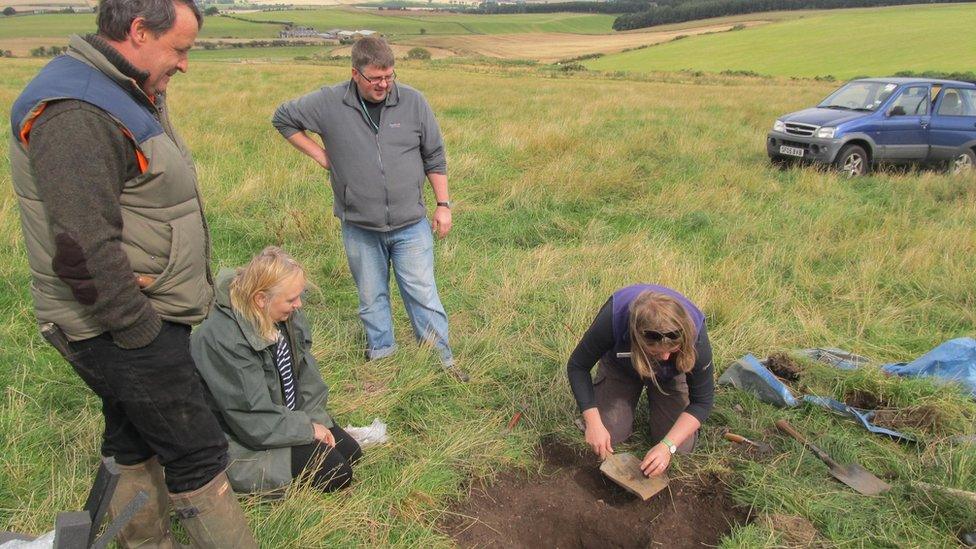Scotland's metal detecting hotspots revealed
- Published

A Viking treasure hoard was found in Dumfries and Galloway a few years ago
A report on metal detecting in Scotland has outlined which parts of the country are most popular for the pursuit.
The areas with the highest recorded activity were Perth and Kinross, Fife, Dumfries and Galloway and the Borders.
The report is part of a project to encourage collaboration between the metal detecting community and the heritage sector.
It hopes to ensure that any artefacts found are handled carefully so vital archaeological information is not lost.
The Collaborative Metal Detecting in Scotland scheme was started and funded by the Treasure Trove Unit (TTU) and Historic Environment Scotland (HES).
The TTU is the first port of call when detectorists uncover new material, and works to preserve significant historic objects for the benefit of the nation by providing a pathway for allocation to museum collections across Scotland.
It also investigates and assesses objects.


Analysis: Giancarlo Rinaldi, BBC news website, south of Scotland reporter
The metal detector has come a long way since it was invented for medical purposes by Parisian Gustave Trouvé in 1874.
Even in its early days, however, it had links to Scotland with the design being refined during World War II by Lt Josef Stanislaw Kosacki, a Polish officer stationed in St Andrews.
But it was in the 1960s that it first became a hobby in the UK and rose in popularity during the 1970s and 1980s.
It has produced a number of notable finds in Scotland, with one of the most significant a Viking treasure hoard in Dumfries and Galloway in 2014.
Back in 2009, ancient gold jewellery potentially worth more than £1m was found in a field near Stirling., external
Four years later, a Roman coin hoard was found on the site of the Belladrum festival.
And, as this new report shows, hundreds of people still trudge across cold and wet fields around the country in the hope of similar finds.

The TTU's Dr Natasha Ferguson said: "The metal detecting community in Scotland finds and reports hundreds of objects every year to the TTU - some of which are of national or even international importance.
"However, even with the best intentions, some artefacts can be damaged, or sensitive archaeology disturbed.
"We want to ensure artefacts discovered through recreational activities like metal detecting are recovered carefully and a detailed find spot recorded so important archaeological information is not lost."
The project hopes to raise awareness of best pratice for metal detecting to ensure the "best result for everyone".
The report is the first of its kind to be attempted in Scotland and was conducted by GUARD Archaeology.
'Issues of trust'
It found more than 500 "hobbyist" metal detectorists across the country, the majority of them men and predominantly aged between 45 and 55.
Kevin Munro, senior designations officer for HES, said: "Anecdotally, we seem to be seeing an increase in the numbers of people participating in metal detecting in Scotland - perhaps due to a number of high-profile finds by detectorists in Britain in the past decade.
"We know that detectorists have a great interest in history, and we hope that the project will help us to ensure that they are aware of the appropriate processes for reporting finds when they are discovered."
He said the report had highlighted some "issues of trust between detectorists and heritage professionals".
However, he hoped they could work together in a "constructive, collaborative manner".